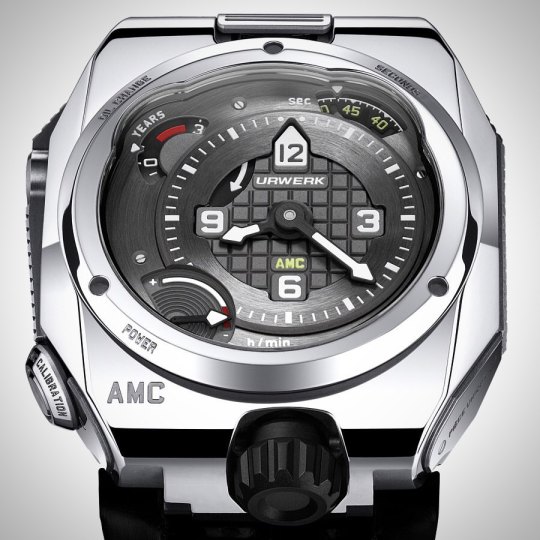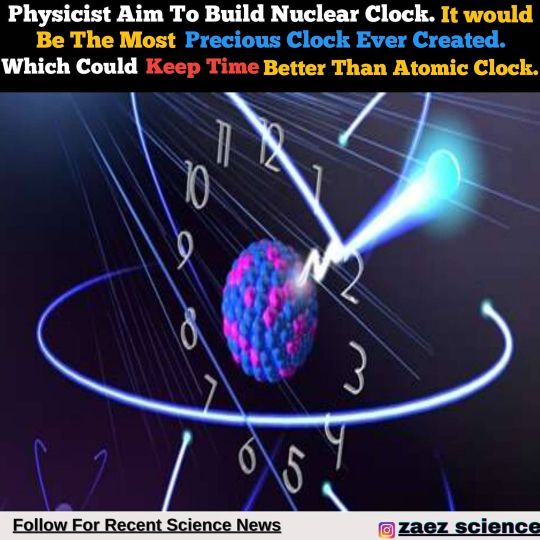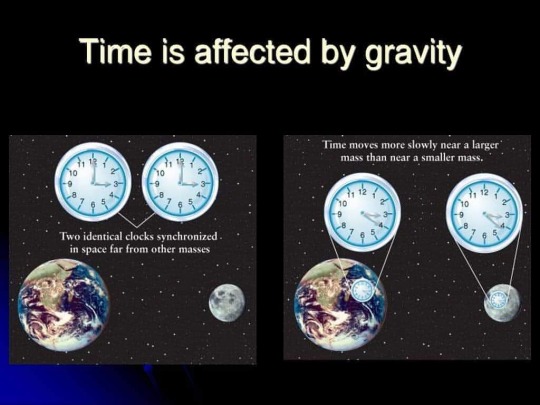#atomicclock
Explore tagged Tumblr posts
Text
Atomic Clock Market Is Anticipated to Witness High Growth Owing to Precise Time Synchronization
Atomic clocks provide ultra-precise timekeeping by measuring the natural frequency of atoms, enabling nanosecond-level accuracy for applications ranging from global navigation satellite systems to high-frequency trading and telecommunications networks. These instruments harness technologies such as cesium beam, rubidium standards, and hydrogen masers to deliver unparalleled stability, making them critical for synchronizing data centers, power grids, and defense systems.
As enterprises and governments pursue digital transformation, the Atomic Clock Market Demand for reliable time stamps and network synchronization has surged, driving market growth. The compact size and reduced power consumption of modern chip-scale atomic clocks (CSACs) also support deployment in IoT devices, autonomous vehicles, and space missions. With continuous innovation in miniaturization and cost optimization, the atomic clock market offers significant advantages in scalability and integration.
Get More Insights On- Atomic Clock Market

#PrecisionTiming#ClockSynchronization#AtomicClock#AtomicClockMarket#AtomicClockMarketTrends#AtomicClockMarketDemand#CoherentMarketInsights
0 notes
Text
How Does Time Dilation Affect Motion 2025
How Does Time Dilation Affect Motion 2025
Time dilation is a fascinating concept in physics that challenges our everyday understanding of time and motion. Rooted in Albert Einstein’s theory of relativity, time dilation describes how time can pass at different rates for observers depending on their relative speeds or the strength of the gravitational field they’re in. In 2025, this concept remains vital in modern physics, GPS technology, space exploration, and our understanding of the universe. Book-Level Explanation (University Standard) Time dilation is a relativistic effect predicted by both Special Relativity and General Relativity. It describes how a clock in motion relative to an observer (or in a stronger gravitational field) will tick slower compared to a clock at rest (or in a weaker field). 1. Time Dilation Due to Relative Velocity (Special Relativity) According to Einstein’s Special Theory of Relativity (1905), time dilation occurs when two observers move at different velocities. The moving clock appears to run slower compared to the stationary observer's clock. The formula for time dilation in special relativity is: Where: - = time experienced by the moving observer - = time in the stationary frame - = relative velocity between observers - = speed of light in a vacuum As the speed approaches the speed of light, the denominator becomes smaller, causing to grow significantly—meaning time stretches for the moving observer. 2. Time Dilation Due to Gravity (General Relativity) Einstein's General Theory of Relativity (1915) predicts that time also runs slower in stronger gravitational fields. This is called gravitational time dilation. A person standing near a massive object (like a planet or black hole) experiences time passing more slowly compared to someone farther away. This effect has been confirmed by precision atomic clocks at different altitudes. Real-World Implications: - GPS Systems: GPS satellites orbiting Earth experience both gravitational and velocity-based time dilation. Engineers must account for this discrepancy to maintain precise timing for location accuracy. - Astronauts: People traveling at high speeds in space age slightly less than people on Earth—a real, albeit tiny, manifestation of time dilation. - Particle Physics: Muons created in Earth’s upper atmosphere live longer when moving at near-light speeds due to time dilation, allowing them to reach the ground.


Easy Explanation (For Simpler Understanding) Imagine you and your friend have identical clocks. You stay on Earth while your friend boards a super-fast spaceship. When your friend comes back, you check the clocks—and surprise! Your friend’s clock shows less time passed. That’s time dilation! Let’s break it down like a story: - Time is not fixed—it’s stretchy like rubber. - The faster you move, the more time slows down for you compared to people who aren’t moving. - The closer you are to something super heavy (like a planet or black hole), the more gravity stretches time, making it go slower for you. Fun Example: If you lived on a spaceship that could fly near the speed of light, and you went on a trip for one year, you might come back to Earth and find that 10 or even 100 years have passed here! You’d be younger than your friends. Scientific Applications in 2025: In 2025, time dilation isn’t just theory—it’s part of everyday technology and cutting-edge research. Satellite-based communication, interplanetary probes, and next-generation atomic clocks all require precise corrections for relativistic time shifts. Researchers studying wormholes, quantum gravity, and black holes constantly factor in time dilation to model accurate spacetime behavior. Final Thoughts Time dilation shows us that time is not an absolute, universal constant. Instead, it’s deeply connected to motion and gravity. This makes it one of the most important insights into the nature of the universe. Whether you're exploring space, developing high-speed transportation, or syncing satellites, understanding time dilation is essential. External Reference Link: For a deeper understanding, visit the Wikipedia page on time dilation: https://en.wikipedia.org/wiki/Time_dilation Internal Blog Recommendations from EdgyThoughts.com: - What If We Could Harness Energy from Black Holes 2025 https://edgythoughts.com/what-if-we-could-harness-energy-from-black-holes-2025 - What If Time Travel Became Scientifically Possible 2025 https://edgythoughts.com/what-if-time-travel-became-scientifically-possible-2025 Disclaimer: The simplified explanation above is intended to make the concept easier to grasp. It does not replace the technical depth needed for academic exams or professional studies. If you're preparing for tests, always refer to the detailed textbook version for accuracy. Read the full article
#20250101t0000000000000#2025httpsedgythoughtscomwhatiftimetravelbecamescientificallypossible2025#2025httpsedgythoughtscomwhatifwecouldharnessenergyfromblackholes2025#accuracyandprecision#alberteinstein#altitude#astronaut#atmosphere#atomicclock#behavior#blackhole#communication#concept#dilationhttpsenwikipediaorgwikitimedilation#edgythoughtscom#elementaryparticle#energy#explanation#formula#generalrelativity#globalpositioningsystem#gravitationaltimedilation#gravity#interplanetaryspaceflight#modernphysics#motion#naturalrubber#particlephysics#physicalconstant#physics
0 notes
Link
Imagine a world where science and pop culture collide in a dazzling celebration of groundbreaking discoveries. That's the very essence of the Breakthrough Prize ceremony, an annual event that honors the brightest minds in science and mathematics. This prestigious award ceremony, often referred to as the "Oscars of Science," isn't just about recognizing brilliant scientific achievements. It's about fostering public interest in science, inspiring a new generation of scientists, and bridging the gap between the worlds of research and entertainment. Science Shines Bright at the 2024 Bridging the Gap Between Science and Pop Culture Founded in 2012 by a collective of visionary individuals – Sergey Brin (Google co-founder), Mark Zuckerberg (Facebook founder), Priscilla Chan (co-founder of the Chan Zuckerberg Initiative), Yuri & Julia Milner (technology investor & science philanthropist), and Anne Wojcicki (co-founder of 23andMe) – the Breakthrough Prize aims to elevate the profile of scientists in popular culture. By bringing together the greatest minds in science with the biggest names in Hollywood, the Breakthrough Prize ceremony creates a captivating spectacle that garners global attention. Past ceremonies have featured A-list presenters and performers like Kristen Bell, Vin Diesel, Gal Gadot, John Legend, and Lionel Richie, further amplifying the event's impact. A Glittering Celebration of Scientific Breakthroughs The 2024 Breakthrough Prize ceremony marks a significant milestone – the 10th anniversary of this prestigious event. Set to take place on April 13th at the Academy Museum of Motion Pictures in Los Angeles, the ceremony promises to be even more spectacular than ever before. Hosted by the ever-charming James Corden, the event will feature a star-studded lineup, including Robert Downey Jr., Kim Kardashian, Alicia Keys, Venus Williams, and Michelle Yeoh. This prestigious gathering will bring together not just Hollywood royalty and renowned athletes, but also a community of scientists whose discoveries shape our world. The production itself is a testament to the ceremony's grand scale. Vanity Fair and Don Mischer Productions, responsible for major events like the Oscars, Emmys, Olympic Games openings, and Super Bowl halftime shows, are teaming up to create a truly unforgettable experience. Honoring the Architects of Progress: 2024 Breakthrough Prize Laureates Every year, the Breakthrough Prize recognizes scientists who have made significant contributions to the advancement of human knowledge. The 2024 laureates represent a diverse range of scientific fields, focusing on critical areas like human biology, cancer research, and neurological diseases. This year's prestigious awards acknowledge a total of 26 scientific minds: 11 winners of the $3 million Breakthrough Prizes: These awards are distributed across life sciences, fundamental physics, and mathematics. 12 early-career physicists and mathematicians: Recognizing the exceptional talent of emerging scientists. 3 Maryam Mirzakhani New Frontiers Prizes: Dedicated to supporting the work of young women mathematicians. Life Sciences: Revolutionizing Treatments and Understanding Among the 2024 Breakthrough Prize laureates in Life Sciences are researchers who have made groundbreaking discoveries with the potential to transform healthcare. Carl H. June and Michel Sadelain revolutionized cancer treatment by harnessing the power of the immune system. Their work focuses on re-engineering T cells – immune system soldiers – to target and eliminate cancerous cells in individual patients. This pioneering approach has shown remarkable success in treating leukemias and other aggressive cancers. Demis Hassabis and John Jumper are behind the creation of AlphaFold, a revolutionary AI system that can accurately predict the structure of proteins. This breakthrough discovery has immense implications for understanding disease mechanisms and developing new medications. Thomas Gasser, Ellen Sidransky, Andrew Singleton, and Richard Youle shed light on Parkinson's Disease by pinpointing the most common genetic causes of this debilitating neurological condition. Their research offers valuable insights into the disease process and paves the way for the development of better treatments. Sabine Hadida, Paul Negulescu, and Fredrick Van Goor are being recognized for creating life-changing treatments for cystic fibrosis. Their work targets the root cause of the disease, greatly improving the lives of cystic fibrosis patients. Fundamental Physics and Mathematics: Unveiling the Universe's Secrets The Breakthrough Prize also acknowledges groundbreaking discoveries in the realms of fundamental physics and mathematics. Hidetoshi Katori and Jun Ye constructed atomic clocks with unparalleled accuracy. These incredible timekeeping devices lose less than a second in over 15 billion years, pushing the boundaries of precision measurement. John Cardy and Alexander Zamolodchikov made significant contributions to statistical physics and quantum field theory. Their work has applications in various fields, from particle physics to the study of black holes.
#2024BreakthroughPrizelaureates#AlphaFold#AnneWojcicki#atomicclocks#BreakthroughPrize#BreakthroughPrizeceremony#CarlJune#cysticfibrosis#differentialgeometry#fundamentalphysics#lifesciences#mathematics#MichelSadelain#ParkinsonsDisease#scienceandpopculture#scienceawards#ScienceShinesBrightatthe2024
0 notes
Video
youtube
Physicists' Laser Experiment: A New Era for Atomic Clocks!
In a groundbreaking experiment, physicists have successfully used a laser to excite the nucleus of an atom, a feat that could pave the way for the development of a new type of atomic clock. This advancement holds the potential to significantly improve timekeeping precision, impacting various fields such as navigation, telecommunications, and fundamental physics research. The experiment demonstrates a novel approach to manipulating atomic nuclei with lasers, opening up new avenues for exploration in nuclear physics and quantum mechanics.
#ScienceFather #Innovation #ScientificResearch #Technology #FutureScience #TechNews #ResearchBreakthrough #STEM #ScienceInnovation #TechTrends#Physics #LaserExperiment #AtomicClock #Timekeeping #NuclearPhysics #QuantumMechanics #ScientificResearch#Innovation #TechAdvancement
#Researcher #Analyst#Engineer #Technician #Coordinator #Specialist #Writer #Assistant #Associate #Biologist #Chemist #Physicist #Statistician #DataScientist #Consultant #Coordinator #ResearchScientist #SeniorScientist#JuniorScientist#PostdoctoralResearcher#ScienceFather
More Details:
Website link: youngscientistawards.com
Nomination Link : https://x-i.me/suwyou5
Contact Email: [email protected]
Twitter : https://twitter.com/youngsc06963908
Linkedin- : https://www.linkedin.com/in/shravya-r...
Pinterest : https://in.pinterest.com/youngscienti...
Blog : https://youngscientistaward.blogspot....
Tumblr : https://www.tumblr.com/blog/shravya96
0 notes
Photo

O Urwerk AMC foi o grande vencedor do #gphg2019 na categoria Ousadia! 💥💥💥 O Projeto AMC é composto de um relógio de pulso mecânico e um relógio atômico portátil ao qual o primeiro é acoplado para ajuste da hora e precisão. O AMC é uma edição limitada de apenas três conjuntos, e foi inspirados nos relógios “sympathie” de Breguet. 💰 2,75 Milhões de Francos Suíços 📷 @urwerkgeneve • • #urwerk #urwerkamc #atomicclock #sympathie #independentwatchmaking #indiesdoitbetter #relogioserelogios https://www.instagram.com/p/B4qBZCslnIt/?igshid=5py4qj9r8roa
#gphg2019#urwerk#urwerkamc#atomicclock#sympathie#independentwatchmaking#indiesdoitbetter#relogioserelogios
7 notes
·
View notes
Text
How does a Quartz Watch Works?
Quartz watch purely depends upon the electrical signals in turning up a motor to move the second's hand. The main target is to move the second's hand at a certain speed, which makes the minute's and hour's hand to move at a correct pace. In quartz watches, this is made to done by a series combination of gears, electromagnets, and quartz material, which makes the name quartz watch. To know more about the operation, please visit the below link.
#Technology#Watch#Clock#pendulum#Quartz#gears#electromagnets#transducer#microchip#steppermotor#flipflop#atomicclock#education#science#edtech
1 note
·
View note
Photo

Hexagon is an all new instrumental from Dr. Snik's new album Atomic Clock Time Look for it on Bandcamp, Spotify, iTunes, Amazon and all other streaming platforms... BANDCAMP / SPOTIFY https://drsnik.bandcamp.com/album/atomic-clock-time https://open.spotify.com/track/3om2ieNBtfbdIbef49eAsf?si=bbe986ca97644659 #hexagon #atomicclock #instrumental #sythnwave #electronicmusic #drsnik #atomicclocktime #darkwave #horrorfilmfestival #horrorcommunity #creators #creepy #virtualorchestra #officialselection #horrorlife #horrorgenre #creepcommunity #scifisoundtrack #indiehorror #horrorart #soundtrack #horrorsoundtrack #musicforfilm #SpreadtheHorror https://www.instagram.com/p/CYhUOU9lUzD/?utm_medium=tumblr
#hexagon#atomicclock#instrumental#sythnwave#electronicmusic#drsnik#atomicclocktime#darkwave#horrorfilmfestival#horrorcommunity#creators#creepy#virtualorchestra#officialselection#horrorlife#horrorgenre#creepcommunity#scifisoundtrack#indiehorror#horrorart#soundtrack#horrorsoundtrack#musicforfilm#spreadthehorror
0 notes
Photo

Okay it’s #metalmonday so how bout a #DarkAngel “We Have Arrived” two-fer with NM/NM original 1985 Metalstorm and 1988 Azra Records #LP #vinyl pressings featuring the nascent #atomicclock @therealgenehoglan ? #thrash #metalclassics (at Mad River Valley) https://www.instagram.com/p/CRhwiLJMlYh/?utm_medium=tumblr
0 notes
Photo

Nuclear clocks could be the GOAT: Greatest of all timepieces. If physicists can build them, nuclear clocks would be a brand-new type of clock, one that would keep time based on the physics of atoms’ hearts. Today’s most precise clocks, called atomic clocks, rely on the behavior of atoms’ electrons. But a clock based on atomic nuclei could reach 10 times the precision of those atomic clocks, researchers estimate. Unlike atoms’ electrons, atomic nuclei are subject to the strong nuclear force, which holds protons and neutrons together.That means nuclear clocks could allow new tests of fundamental ideas in physics, including whether supposedly immutable numbers in physics known as fundamental constants are, in fact, constant.Nuclear clocks would be based on jumps between those nuclear energy levels, rather than those of electrons.To tally time with nuclei, scientists need to be able to set off the jump between nuclear energy levels with a laser. “Nuclear levels are not normally accessible with lasers,” said theoretical physicist Marianna Safronova. A variety of thorium called thorium-229 has a pair of energy levels close enough in energy that a laser could potentially set off the jump. Recent measurements have more precisely pinpointed the energy of that jump, a crucial step toward building a thorium nuclear clock.Now that physicists know the size of the energy jump, they are aiming to trigger it with lasers. _________________________________________ FOLLOW @ZAEZ_SCIENCE FOR RECENT SCIENCE NEWS. @zaez_science @zaez_science @zaez_science ___________________________________________ Hastages:-#nuclearblast #nuclearphysics #nuclearblastrecords #nuclearpower#atomicclock #atomicclocks #timelapse #timetravel #timea #timeattack #timeandtru #timeaftertime #newsflash #anews #newsdaily #newsday #newshop #sciencefacts #sciencefact #sciencefactory #sciencefactcards #sciencefacteeday #sciencefactfriday#sciencefactguide https://www.instagram.com/p/CQI5gM3l0DH/?utm_medium=tumblr
#nuclearblast#nuclearphysics#nuclearblastrecords#nuclearpower#atomicclock#atomicclocks#timelapse#timetravel#timea#timeattack#timeandtru#timeaftertime#newsflash#anews#newsdaily#newsday#newshop#sciencefacts#sciencefact#sciencefactory#sciencefactcards#sciencefacteeday#sciencefactfriday#sciencefactguide
0 notes
Photo

Why all kind of clock Slows down in Space ? All types of Clock uses either of one principle to drive its gear train to register time. 1) Pendulum oscillation 2) Hair/ Coil Spring Tension 3) Cesium-133 atom frequency 1) Pendulum Type Clock uses Time Period of the pendulum to register a second. ‘’Time Period of Pendulum is defined as time taken by pendulum to complete one full oscillation.’’ It is represented by Formula: T= 2π✔️L/g Its obvious from the above formula that Time Period T is inversely proportional to Gravity g. In Space, value of g reduces and Time Period T increases. That means same pendulum would take, say 1.2 seconds to register 1 second and we can say the Clock has ‘slown down’ 2) Coil Spring Clock uses Time Period of Spring to register a second. The Formula for which is as : T= 2π✔️m/k Where k is spring constant which is equal to weight of suspended mass divided by length of spring. ie. k= W/L = mg/L If we put this k=mg/L into above Time period formula. T= 2π✔️m/(mg/L) Simplified into, T= 2π✔️L/g Again, Its obvious from the above formula that Time Period T is inversely proportional to Gravity g. In Space, value of g reduces and Time Period T increases. That means same spring would take, say 1.2 seconds to register 1 second and we can say the Clock has ‘slown down’. Few people are wondering , it contradicts General Relativity. For them further explanation below: If you are living on earth and wearing wristwatch which is ticking 1 sec/sec (calibrated as per earth gravity ) and you have a friend on Moon who is also wearing wristwatch ticking 1sec/sec ( calibrated as per moon gravity). When you will go to visit your friend on moon, your wristwatch will slowdown in comparison to your friends wristwatch. Because Your friends wristwatch is telling lunar time which is faster than earth because of lesser gravity. So my explanation is inline with the General Relativity Please wait for my next Post for Atomic Clock explanation. #atomicclock #aadpakvis (bij Netherlands) https://www.instagram.com/p/CO6VfWfFZ0n/?igshid=1s4vo1upx4a6m
0 notes
Text
Check India's first atomic clock


The countdown to the standard determination of India made atomic clock has started. Researchers at the Space Application Center (SAC) of Ahmedabad, Indian Space Research Center (ISRO) have created this indigenous clock, which is being tested so that it can be used in a pilot navigation satellite. Such clocks stimulate data related to location. The difference in time of atomic clocks of satellites in different places is used to detect the exact position of the navigation receiver or anything on the earth. If all the three clocks in a satellite gets stopped, then space scientists have to launch a backup satellite equipped with new nuclear clocks. For this reason, ISRO needed to develop such clocks in India. Tapan Mishra, director of SAC says that ISRO has joined the selected space organisations of the world who have developed such sophisticated technology along with this indigenous nuclear watch. On April 12, ISRO successfully launched IRNSS-1I to replace India's first navigational satellite IRNSS1A. This will complete the group of seven satellites so that the sailors continue to work smoothly. It is expected that it will provide a satellite-based navigation system to India which will be independent of the US-controlled Global Positioning System (GPS). The indigenous nuclear watch will also move towards the indigenous GPS. Read the full article
1 note
·
View note
Photo

Wanna give a shout out wish one of my top favorites metal drummers @therealgenehoglan "aka atomic clock" a happy birthday man! #smx #studmetalx #metalheads #heavymetal #thrashmetal #deathmetal #metal #metalking #battlevest #battlevestassault #battlevestarmy #legend #genehoglan #atomicclock #happybirthday (at Detroit, Michigan) https://www.instagram.com/p/CElDiuxpuf_/?igshid=1p6qwtes0zj41
#smx#studmetalx#metalheads#heavymetal#thrashmetal#deathmetal#metal#metalking#battlevest#battlevestassault#battlevestarmy#legend#genehoglan#atomicclock#happybirthday
0 notes
Photo

For sale: French Vintage 1950s/60s Red Face Wrought Iron Wall Clock BC Paris in Full Working Order #redclock #midcenturymodern #wallclock #vintageclock #Frenchclock #atomicclock #upstagedvintage #BCParisClocks #WroughtIronClock #frenchvintage https://etsy.me/2UWq1UG (at Limousin, France) https://www.instagram.com/p/B-0QFobH_Kr/?igshid=1xpmbjoe6ce07
#redclock#midcenturymodern#wallclock#vintageclock#frenchclock#atomicclock#upstagedvintage#bcparisclocks#wroughtironclock#frenchvintage
0 notes
Photo

Deep space clocks ⏰ . Atomic clocks are critical for precisely measuring time. For example, by using microwaves at a certain frequency, scientists can measure the resulting maximum excitation of cesium atoms. This frequency can be converted into time with a specific number of hyperfine transitions. Thus, in one second, 9,192,631,770 of these transitions occur in cesium. . Atomic clocks are used in GPS satellites 🛰 to measure the distance between objects. However, for the next generation of space exploration, atomic clocks have to be more precise. Imprecise clocks can result in dramatic errors in distance over long periods of time. . Position in space by atomic clocks based on Earth is time consuming, and these clocks are too bulky to be used in space where they need to be used. Thus, in 2019, NASA launched the Deep Space Atomic Clock (top). . Using mercury ions, this deep space clock will be 50x more stable than the ones currently used for GPS. It’s one year mission will reveal its stability in orbit, and will help scientists and engineers determine its performance for future navigation based space missions. . Credit: NASA / public domain. . #atomic #atomicclock #cesium #space #navigation #clocks #spacetime #nasa #spacebased https://www.instagram.com/p/B-ICN65pDxK/?igshid=lq1snptcvtc4
0 notes
Photo

Gene Hoglan in the house. Fuck you, Paul, we got a new drummer! #athomeinhell #genehoglan #atomicclock #namm2020 (at Convention Center, Anaheim, California) https://www.instagram.com/p/B7Zj7X2AQuB/?igshid=6yjgy7yhahnc
0 notes
Photo

Gorgeous Eames Era Welby Starburst wall clock with walnut burst! So excited to have this one listed! I’m in love with the character these clocks give to a home. Link to Etsy is in my Bio! . . . #sunburstclock #starburstclock #atomicclock #welby #welbyclock #welbywallclock #midcenturyatomic #mcmclock #retrowallclock (at Berthoud, Colorado) https://www.instagram.com/p/B7Gs0BWAIdI/?igshid=24r27hxo3rvz
#sunburstclock#starburstclock#atomicclock#welby#welbyclock#welbywallclock#midcenturyatomic#mcmclock#retrowallclock
0 notes